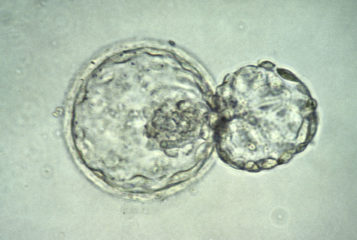Faulty stem cells may cause the onset of male pattern baldness, scientists have found. Professor George Cotsarelis and colleagues at the University of Pennsylvania School of Medicine in Philadelphia discovered stem cells are present in the hair follicles of both bald and hairy scalp regions in men with male pattern baldness. In bald patches, however, the stem cells are faulty and unable to convert into the intermediate cell type - the progenitor cell - that is necessary for hair growth.
The research team recruited 54 men with male pattern baldness, also known as androgenetic alopecia, who were undergoing hair transplant treatment. They compared the hair follicles in bald and hairy scalp samples of the men. Although bald and hairy scalp regions had similar numbers of stem cells (expressing the protein cytokeratin 15), in bald scalp they discovered the progenitor cell population (expressing the proteins CD200 and integrin alpha-6) was depleted.
The researchers concluded baldness could result from faulty stem cells that are unable to mature into progenitor cells, rather than the absence of stem cells in the hair follicle. Professor Cotsarelis said: 'This implies that there is a problem in the activation of stem cells converting progenitor cells in bald scalp. The fact that there are normal numbers of stem cells in bald scalp gives us hope for reactivating those stem cells'.
The presence of stem cells in the hair follicles of a bald scalp raises the prospect of reversing baldness. The researchers hope to develop a treatment that reactivates and restores the normal function of the hair follicle stem cells, leading to higher levels of progenitor cells and resuming normal hair growth. 'The fact that [the stem cells] are there at all is pretty exciting, and lowers the bar for treatment', Professor Cotsarelis said. 'I'm generally very pessimistic about the prospects for treatment, so we were surprised to find such a large and normal complement of stem cells in the bald patches'.
Adult stem cells play an integral part in the normal cycle of hair growth. Stem cells reside in the hair follicle in an area known as the bulge and divide at the beginning of every hair growth cycle, giving rise to progenitor cells and initiating hair growth. In male pattern baldness, hair follicles diminish in size over time, in a process called miniaturisation.
Miniaturised follicles produce only microscopic hairs, invisible to the human eye, which lead to the bald patches and receding hairlines characteristic of male pattern baldness. Little is known about hair follicle miniaturization, apart from the influence of testosterone on the process. This study sheds light on the role that stem and progenitor cells play in the process.





Leave a Reply
You must be logged in to post a comment.